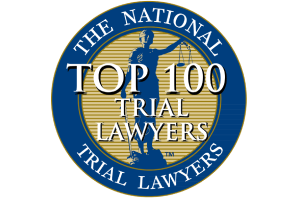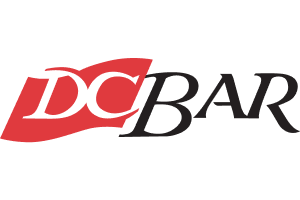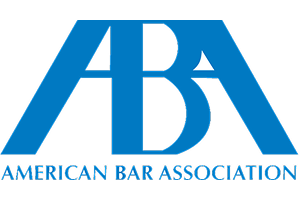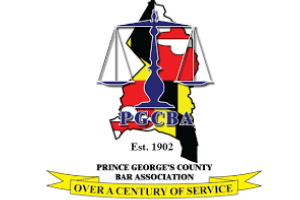Your Family
Negligence
Negligence is usually defined as doing some a prudent person would not do under similar circumstances or failing to do something a prudent person would do under similar circumstances. Each case must rise and fall on its own facts. What is negligence under one set of circumstances may not be negligence under a different set of circumstances.
There are various ways or proving negligence. For example, if there is a statute or rule of the road the apply to a certain fact pattern, that statute and/or rule of the road may well establish prima facie negligence. A person has the right to assume another person will follow rules of the road and use due care. The negligence must also be the proximate cause of the plaintiff’s injuries in order to the plaintiff to recover. If there is some superseding or intervening cause of the injury, the negligence of a defendant alone may not be enough to warrant a recovery.
Common Carriers-Busses, Metro
Common carriers such a METRO busses have the highest duty of care to the public. This is because they frequently have many passengers and the public relies upon them for safe travel. This does not mean that the common carrier is the guarantor of the safety of their passengers. But it does mean they make a concerted effort to protect their passengers from injury. This includes both entering and leaving a common carrier as well as during travel.
Emergency Vehicle Accidents
Emergency vehicles on an emergency run have certain protections that other vehicles may not have. These vehicles must still obey most of the traffic rules and regulations but they are exempt from liability if they are acting reasonable under the circumstances and within certain guidelines. They certainly have the right of way on the roadway if their lights are flashing and horns sounding. At intersections they do have to be careful when proceeding through a traffic control signal. Indeed, if they face a red light, they need to stop before proceeding. In many cases, the right of way is not unqualified. Each case must be determined on its own facts.
Bicycle Accidents
Bicyclists have their own rules of the road under the motor vehicle code of Maryland. Generally, bicyclists are required to obey all rules of the road that a driver of an automobile must follow with some variation depending upon circumstances.
Motorcycle Accidents
The operator of a motorcycle is also under a duty to observe what is there to be seen and use reasonable judgment in the operation of a motorcycle. He has the same duties as any other operator of a motor vehicle. He is also entitled to receive the same considerations for his safety as any other driver of a motor vehicle.
Funeral Procession Accidents
Funeral processions are likewise treated somewhat different as well. Although participants in a funeral procession must act with ordinary care, they are given certain privileges as long as their lights remain on and there is indication they are actually in a procession. There requirements of a funeral procession are not intended to be all inclusive in this analysis as there are specific rules and regulations each funeral procession must follow.
Accidents Involving Minors
All operators of a motor vehicle are held to the adult standard of care. A minor must use the same degree of care when operating a motor vehicle as an adult. A disabled person is likewise held to the same standard of care if they are driving a motor vehicle.
Defective Vehicles
In accidents, one might be confronted with the suggestion that the vehicle was in a state of disrepair and it was that state of disrepair that caused the accident rather than the operator. Every operator of a motor vehicle is deemed to have at least determined that the vehicle they were driving was safe to drive. One can’t blindly operate a vehicle that was otherwise obviously unsafe. Thus, if all four tires are bald yet a person operates the vehicle and collides with another vehicle as a result of a tire blowout, that tire defect is not an excuse for the accident. The vehicle should not have been operated in the first place. Lights must be working or the vehicle should not be operated. The operator of a vehicle is required to make sure the brakes appear to be working appropriately, otherwise the vehicle should not be operated. Finally, if a person is towing another vehicle, trailer or the like, they have an obligation to make sure the trailer is attached securely and equipped properly according to the statutes and regulations in force.
Road Conditions Causing Accident
Sometimes the conditions of the roadway are involved in an accident. A public authority may be held responsible for the condition of the roadway under certain circumstances. There are immunity issues that have to be considered when dealing with public authorities but the maintenance of roadways frequently does not extend immunity to the public authority. Without getting into too much detail, the issue involving immunity is whether the act of the governmental authority is ministerial or proprietary. If there is any indication of a proprietary act, there is no immunity. Thus, it becomes important to determine the difference between ministerial/governmental versus proprietary. The distinctions are too complex to discuss in this article but are well know to the experienced personal injury attorney.
Assuming the maintenance of the roadway is not subject to the immunity claim, the governmental entity would have a duty to repair the road and/or a duty to warn the public of any known condition. There may well also be design defect conditions regarding the roadway that need to be addressed by the experienced personal injury attorney. Malfunctioning traffic lights often contribute to accidents. A governmental entity has a duty to periodically inspect traffic control signals and make necessary repairs immediately upon being advised of a malfunction. Contractors working on public road have a duty to warn vehicles of upcoming congestion or construction work being performed. There is an entire book of regulations that highway construction contractors must follow with regard to cones, flashing boards and other warning devices and use of individuals to control traffic. Failure to follow these very strict rules and regulations and/or guidelines could expose the contractor to liability.
Occupiers or Owners of Land Causing Accident
Not all automobile accidents involve another vehicle. For example, an owner of land that abuts a roadway must make sure that livestock does not get loose and cross the road, thereby creating a dangerous situation. Occupiers or owners of property can not create a hazard that obstructs the view of the driving public. Occupiers or owners of parking garages have certain responsibilities to occupiers of the garage, depending on circumstances.
Accidents at Railroad Crossings
Railroad crossing offer yet another example of duties owed both by the motorist and the railway. The motorist clearly has the responsibility to stop. Look and listen where applicable. If a train is approaching, the motorist must yield the right of way. Where the view of the railway is obstructed for any reason, the motorist is obliged to do what is reasonable to make sure they do not cross the railway when it is unreasonable or unsafe to do so. On the other hand, the railway must maintain safe crossing. They cannot knowingly permit obstructions to motorist views as they approach a railway crossing. At extra hazardous crossings, there is even a higher duty to warn that applies to the railroad. The operators of a train have duties as well. They must sound a horn when approaching a crossing. They must not be traveling at an excessive speed for the conditions existing that would not permit a stop within a reasonable distance. Railroad crossing cases are very fact specific as to each case.
Liability for Negligence of Someone Else
In some states there is a statutory presumption of agency. This means that the driver is presumed to be the agent for the owner and therefore the driver’s negligence is imputed to the owner. This is a rebuttable presumption but the burden of proof falls on the owner to demonstrate that the driver was not acting as the agent, servant or employee of the owner at the time of an accident. In other states, if there is no presumption of agency, it becomes the burden of the plaintiff to prove that the owner was acting as the agent, servant and/or employee of the owner before liability attaches to the owner. Therefore, the plaintiff would have to prove that the driver was doing something on behalf of the owner in order to keep the owner in the claim.
Words like vicarious liability and respondeat superior are used to suggest that an employer is liable for acts of the employee done in the ordinary course of business. If the employee is on a frolic of his own rather than acting within the scope of his employment, it becomes much more difficult to hold the owner responsible for an accident. The experienced attorney must also be able to distinguish between an agent and an independent contractor in order to prove liability.
There is likewise a theory called negligent entrustment whereby an owner could be held liable for the negligence of a driver if the owner knew of prior negligent propensities of the driver or had knowledge of prior intemperate habits.
Some states have what is known as the family car doctrine whereby if a person is driving a car owned, provided or maintained by the head of a household for the customary convenience of family members and the vehicle was being driven by a family member with the express or implied consent of the owner, than the owner can be held responsible for any negligence of the driver.
Maryland is not one of the states that have adopted the family car doctrine. In Maryland one needs to prove agency in order to hold the owner responsible for the negligence of the driver. This includes situations where a spouse or minor is driving the vehicle.
A passenger is not normally liable for the negligence of a driver of an automobile. If one can prove that the passenger had the right to control the driver in the operation of the vehicle, or that he had assumed control, or the owner and passenger were engaged in a joint enterprise at the time of the accident, then the owner can be held responsible for the negligence of the driver.
An automobile seller can likewise be liable for an accident if he sold a vehicle that was in non compliance with statutory requirements. For example, if a seller knew or should have known of a dangerous condition of a vehicle at the time of the sale and there was a statutory requirement of a safety inspection that was not performed and the safety inspection would have revealed the faulty part of the vehicle, if the failure to conduct the safety inspection was a substantial contributing factor in the accident, the seller could be determined to be negligent as well.
Statutory and Common Law Duties of a Driver
There are many common law and statutory rules of the road that could impose liability on a driver if not followed. A driver must always maintain a lookout for what is capable of being seen. He has the duty to keep his vehicle under control at all times. He has the duty to see what is in plain sight. He must be able to stop or slow down his vehicle within his range of vision. He must use reasonable car in passing and overtaking another vehicle. Passing on the right, for example, may not be permitted in certain situations. Passing at intersections is likewise normally forbidden. Following another vehicle too closely is negligence if it leads to an accident. If a vehicle is disabled on or near a roadway, the owner must take certain precautions to warn other drivers. If one parks a vehicle contrary to the law and that leads to an accident, he can be determined to be negligent as well. If a vehicle is left unattended, it must be properly secured such that another person could not get in and drive it away. Thus, leaving keys in an unattended vehicle or leaving a vehicle running while performing an errand could lead to liability as well.
A driver of a vehicle must use certain maneuvers to properly turn a vehicle. Notice of a turn must be given in sufficient distance to permit a driver from the rear to be properly warned of the impending turn. A sudden stop leading to an accident could cause liability for the stopping vehicle as well. Changing lanes when it is unsafe to do so can result in liability. Failing to give the right of way to a vehicle that is entitled to the right of way of way is negligence.
Maryland has what is known as the boulevard rule. This means that a driver of a vehicle who is the unfavored vehicle on the roadway must yield the right of way to the favored vehicle. Failure to do so usually results in liability absent very special circumstances. Therefore, when coming from a side street controlled by a stop sign the driver must yield the right of way to all vehicles on the intersecting street that are not controlled by a traffic device. Even if the favored driver is speeding, it becomes difficult to impose liability on the favored driver.
A driver cannot simply speed through an intersection just because he has a green light. Rather, the driver still has the duty to proceed cautiously through any intersection. Obviously, if a driver is approaching a yellow light he must slow down to avoid a collision. In some case, driving too slow can likewise impose liability if the slowness is the proximate cause of the accident many states have rules and regulations indicating that one cannot drive below a certain speed because of the danger that might present to other vehicles on the road.
Duty Towards Children
A motorist is held to a higher standard and must exercise greater caution for the protection of a child than necessary for an adult. The motorist must understand that a child does not exercise the same degree of concern for their own safety as an adult might exercise. It is important to anticipate danger to children and take proper steps to avoid injuring them. If a person does exercise reasonable caution when there are children around, drives at a reasonable speed, obeys the rules of the road and has no reason to anticipate a child would dart out into a road at a time where evasive action would be nearly impossible, the motorist would not be negligent. The standard of care required varies depending on the age of the child. Essentially, the law suggests that the care a child must exercise for his own safety is that degree of care ordinarily to be expected of a reasonably careful child of similar age, knowledge, judgment, intelligence and experience.
Accidents Involving Pedestrians
A pedestrian is under a duty to use reasonable care just as a driver of a motor vehicle is. A pedestrian is expected to act reasonably under the circumstances to avoid harm to himself. Essentially, the duties of a driver and a pedestrian are equal. Of course, if the pedestrian is in a crosswalk, there is a heightened responsibility on the driver of the motor vehicle to avoid striking the pedestrian. Of course the driver of a motor vehicle is responsible for a machine that can cause great harm. The driver must realize this fact and act accordingly. At a “Walk” or “Don’t Walk” signal at an intersection the pedestrian has the right of way if he enters on the appropriate signal and maintains the right of way until he crosses the intersection. Where possible, if a pedestrian is walking along a highway where there is no sidewalk, he should walk along the left side of the road. A highway worker is not held to the same standard of care for one’s own safety as a normal pedestrian. It is expected that a highway worker will be devoting his attention to his work so a driver must recognize when there is maintenance being performed on the streets and act accordingly.
Contributory Negligence
If a person conducts himself in a manner that causes or contributes to the happening of an accident he may be barred from any recovery. A reasonable man standard is used to determine if a person has failed to exercise care to avoid injury to himself. The burden of proof to establish contributory negligence is on the defendant. negligence. Of course, the negligence of a plaintiff must be material to the case. There must be a causal nexus between the plaintiff’s negligence and his injuries. If there is no nexus, there is no contributory negligence that would bar recovery.
Last Clear Chance Doctrine
Even if the plaintiff is guilty of contributory negligence he may be entitled to recover damages if the last clear chance doctrine applies. If the plaintiff by his own negligence was placed in a position of peril in which he could not escape and the defendant saw, or by the exercise of reasonable care should have seen, and understood the perilous position of the defendant and should have discovered the plaintiff’s peril in time to avoid injuring him, he would have the responsibility to avoid the accident because he had the last clear chance to do so.
Assumption of the Risk
Another way for a defendant to escape liability for injury is known as the doctrine of assumption of the risk. This is very much like the contributory negligence doctrine and is often confused with contributory negligence. If the injuries complained of were the result of a dangerous condition or situation of which the plaintiff was aware at the time and, nevertheless, voluntarily decided to undertake the risk, the plaintiff could be barred from recovery. This doctrine has been used successfully on slip and fall cases on ice where a plaintiff is aware of any icy condition yet walks across it anyway and falls.
Sudden Emergency Accidents
In the event a defendant is confronted with a true sudden emergency he is not held to the same standard as a person who has time to evaluate possibilities and act accordingly. If there was a better way to act but he did not have the time to think things through, he is held to the standard of reasonable conduct of similar persons under similar circumstances. This, in effect, excuses conduct that would otherwise be negligent. This doctrine is not available to a defendant who creates the emergency himself by the way he drives his vehicle. In other words, one can’t complain of a sudden emergency if he created the emergency by the way he was driving the vehicle.
Unavoidable Accidents
If a judge or jury, as the finder of fact, determines that neither party was guilty of negligence or the breach of a duty of care and the injuries sustained were not avoidable by the exercise of due care, then the law would not impose liability and would leave the parties where it finds them. This doctrine is sometimes used in situation where a person suffers from a sudden heart attack, blackout or seizure. If there is forewarning of this event, there would be duty to exercise ordinary care to avoid the accident. Hence if a person, when he decided to drive the vehicle, knew or had reason to know that he was susceptible to the medical condition and the condition was reasonably foreseeable, he would be guilty of negligence if he nevertheless undertook to drive the vehicle and an accident ensued because of the condition.










